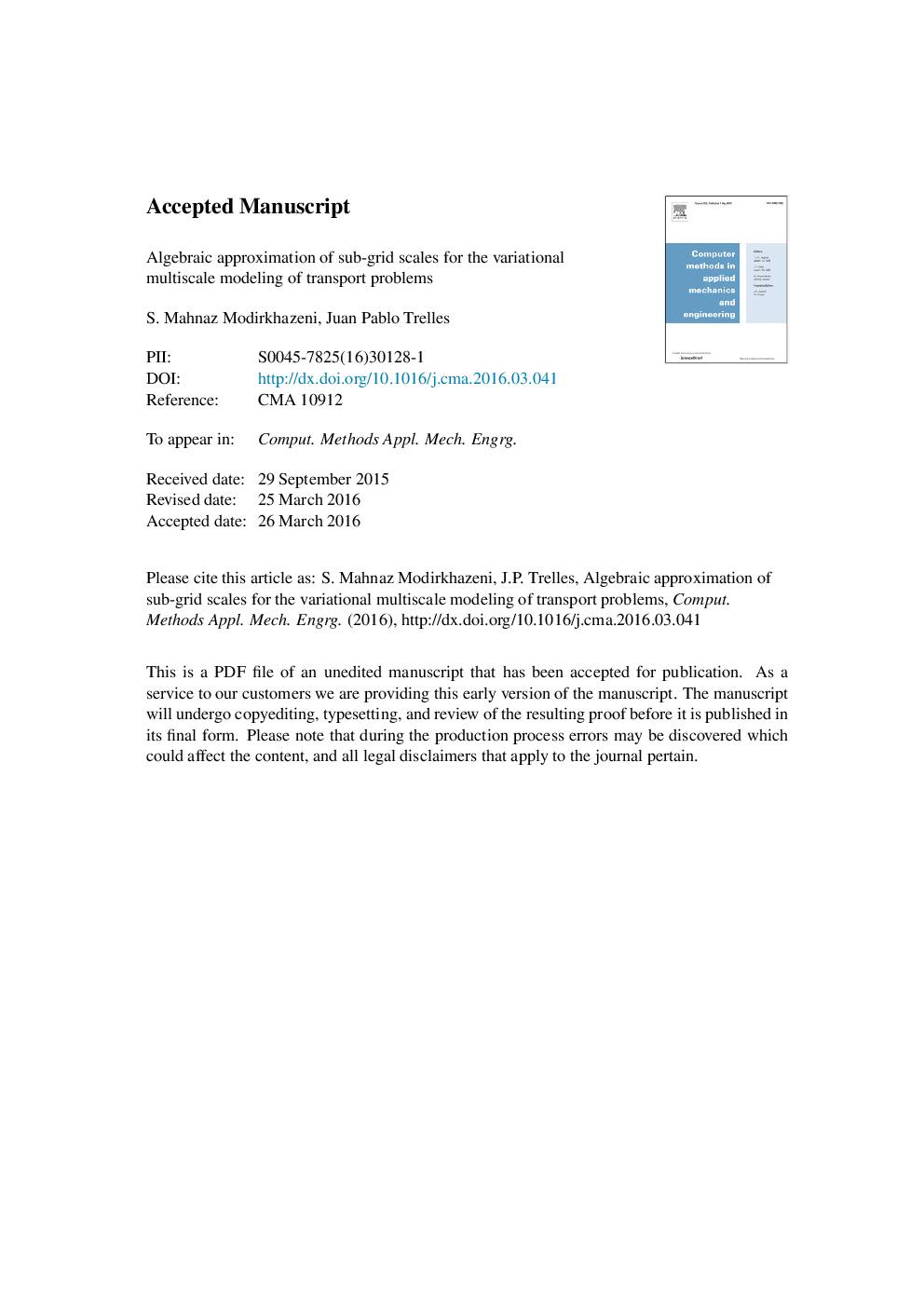| Article ID | Journal | Published Year | Pages | File Type |
|---|---|---|---|---|
| 6916134 | Computer Methods in Applied Mechanics and Engineering | 2016 | 40 Pages |
Abstract
Variational Multiscale (VMS) Finite Element Methods (FEMs) are robust for the development of general formulations for the solution of multiphysics and multiscale transport problems. To obtain a tractable and computationally efficient model, VMS methods often rely on a residual-based algebraic approximation of the sub-grid scales (small or unresolved features of the solution field not captured by the discretization) using a so-called intrinsic time scales matrix, which depends on the problem's overall differential operator and represents the main model parameter. A novel technique for approximating the intrinsic time scales matrix for generic transport problems in a relatively inexpensive manner (e.g., does not rely on eigenvalue computations) is presented. The method is denoted Transport-Equivalent Scaling (TES) and is based on the monolithic casting of the transport problem as a system of transient-advective-diffusive-reactive (TADR) equations and a subsequent scaling of the coefficient matrices such to preserve each type of transport flux. An algebraic VMS formulation incorporating the TES method is complemented with a discontinuity-capturing (DC) approach and implemented within a FEM solver for the solution of TADR problems. The solution of the global discrete system is accomplished using a generalized-alpha time-stepper together with a globalized inexact Newton-Krylov nonlinear solver. The effectiveness of the TES formulation is verified with the simulation of benchmark incompressible, compressible, and magnetohydrodynamic flow problems. The results demonstrate that the TES method seamlessly handles incompressible-compressible flows in a unified manner (e.g., without assessing the compressibility of the flow). The convergence process using the TES approach and a more standard approximation for the intrinsic time scales, as well as the effect of the DC approach, are also investigated. Analysis of the intrinsic time scales for a one-dimensional incompressible flow model reveals the similitudes and differences between the TES formulation and other conventional methods.
Related Topics
Physical Sciences and Engineering
Computer Science
Computer Science Applications
Authors
Seyedeh Mahnaz Modirkhazeni, Juan Pablo Trelles,
